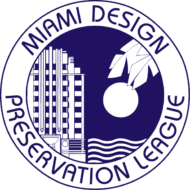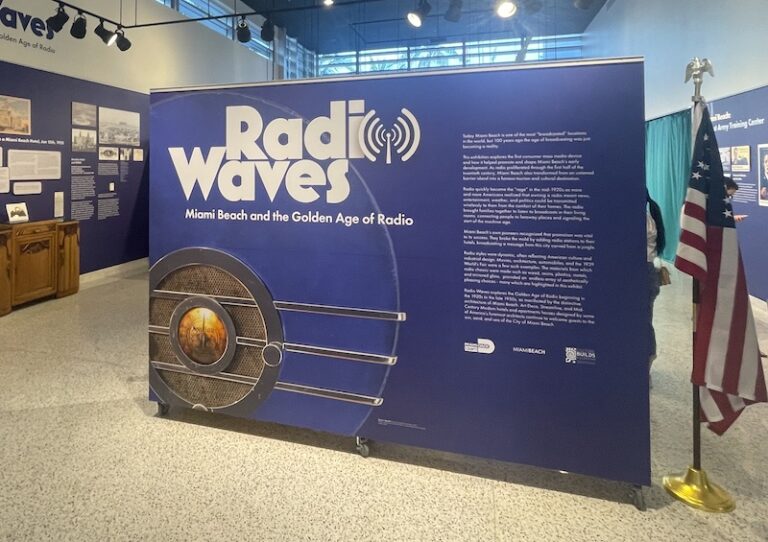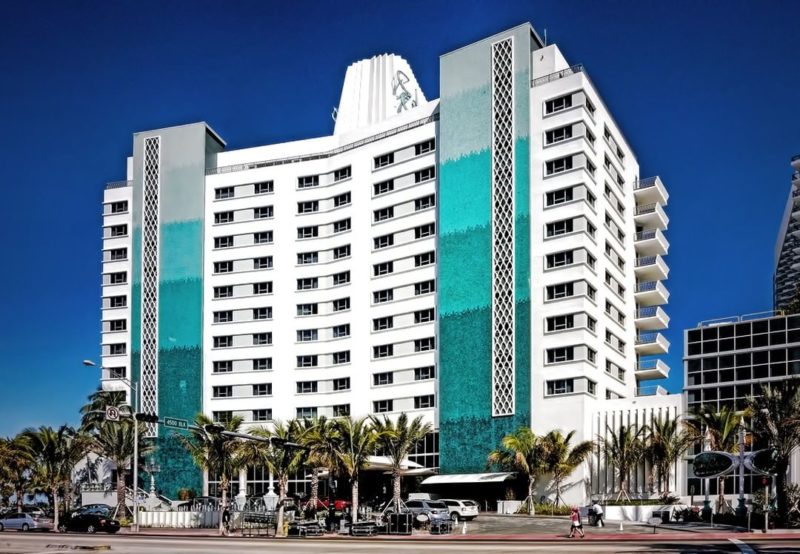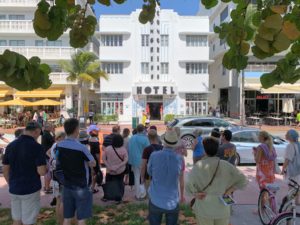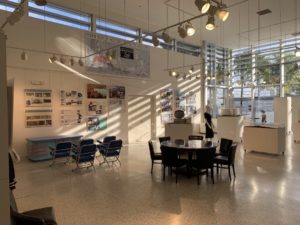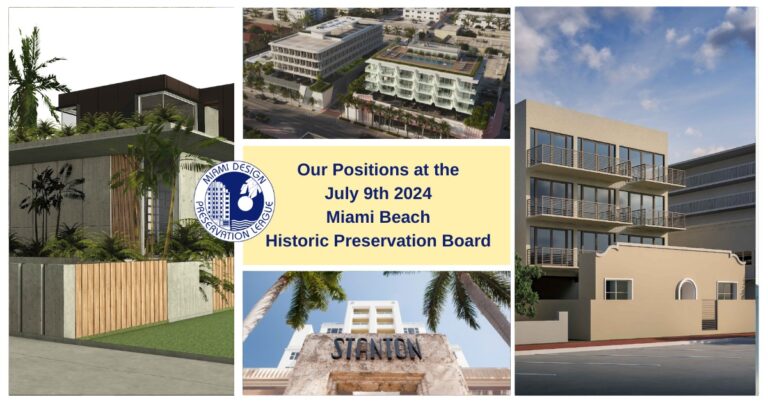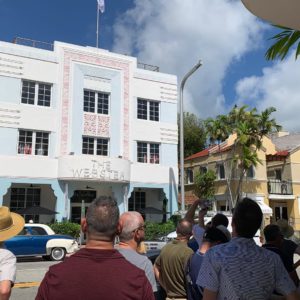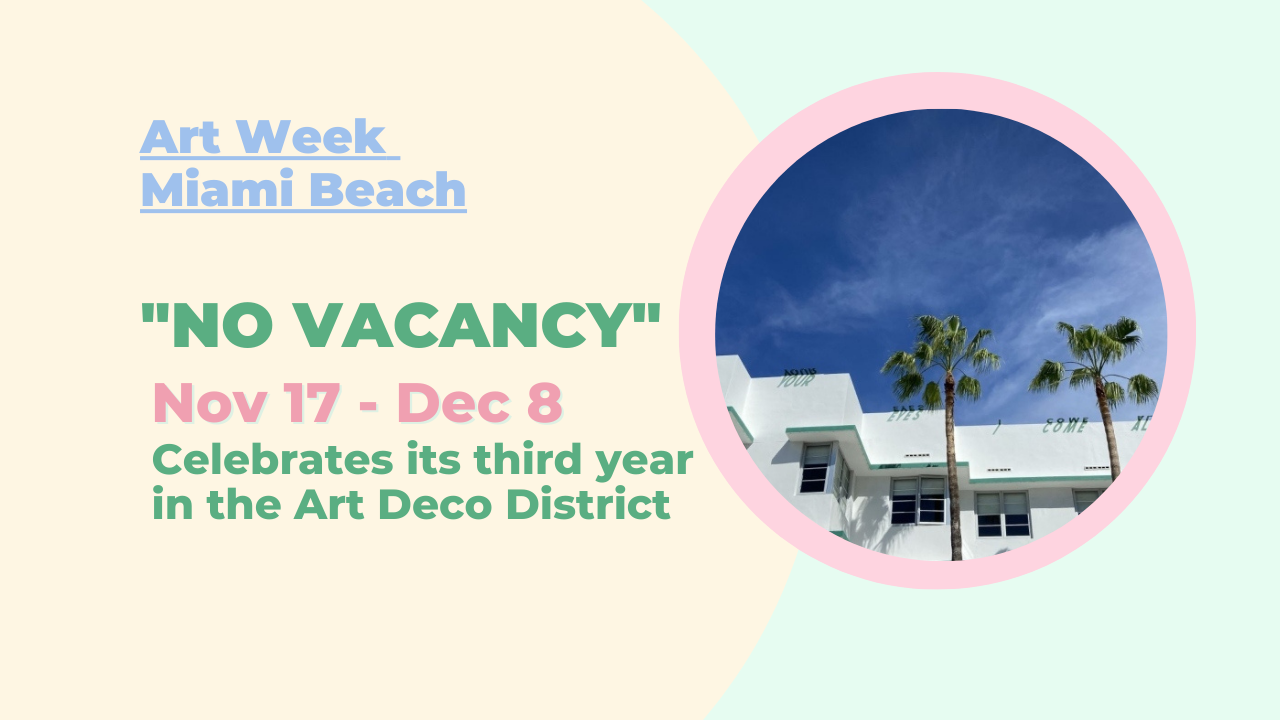
The 2022 edition of No Vacancy, Miami Beach is officially here!
Now in its third year, the juried art competition spotlights and nurtures the city’s innovative arts scene.
And it all starts at Miami Beach’s Art Deco historic district and hotels, which are turned into pop-up galleries for the entire city to enjoy in support of art inspired by The Magic City.
No Vacancy is also part of Art Week Miami Beach, which will take place from November 28 to December 4th this year. It is the perfect occasion to join in and celebrate Miami Beach’s vibrant arts, culture, and architecture.
“I invite everyone to experience Miami Beach’s renowned hotels as destination art spaces,” said Miami Beach Mayor Dan Gelber. “What a spectacular opportunity for this diverse group of local artists to unleash their creativity and talent.”
“It’s great to see our Art Deco landmarks highlighted with contemporary installations from local artists at a time when all eyes will be on Miami Beach,” adds MDPL’s Executive Director Daniel Ciraldo.
Ready for this year’s edition? Here’s a preview of the 12 artists and their works being featured at this year’s competition:
Patria y Vida, Antonia Wright & Ruben Millares
📍Faena Hotel (3201 Collins Ave)

Architect: Roy France
Both Cuban-American artists, Wright and Millares created this large-scale light sculpture of stacked barricades as a symbol of nonviolent global resistance and the civil right to protest. Patria y Vida borrows its name from the popular Cuban anticommunist chant of the same name.
It was also inspired by Hong Kong’s Pro-Democracy Protests, in which activists bundled up barricades as an act of protection. Here the barricade, once a signifier of anxiety, meant to control humans in public spaces, becomes one of global solidarity and perseverance.
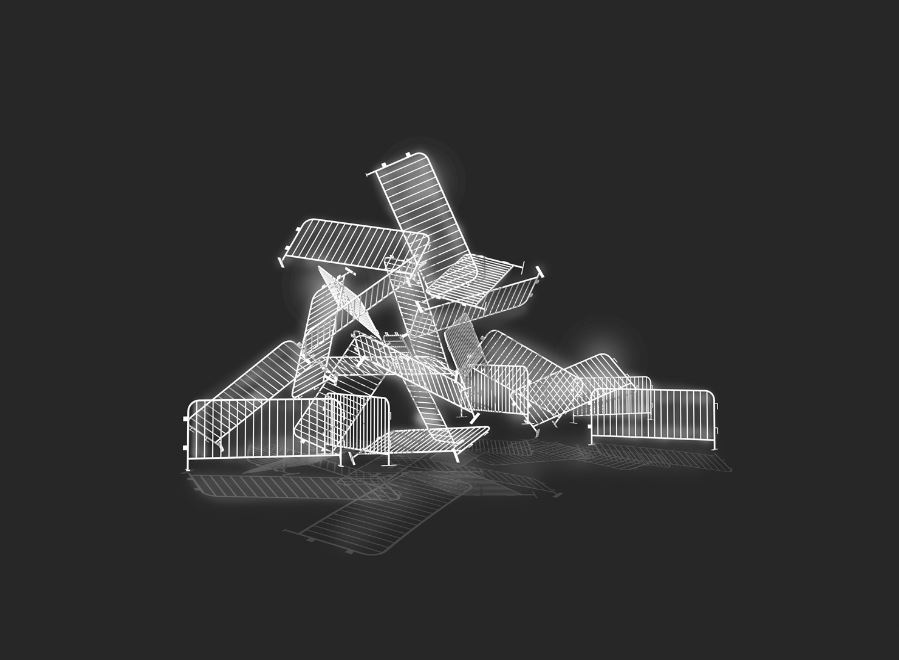
Submersion in Blue, Maritza Caneca
📍Riviera Suites South Beach (318 20th St)
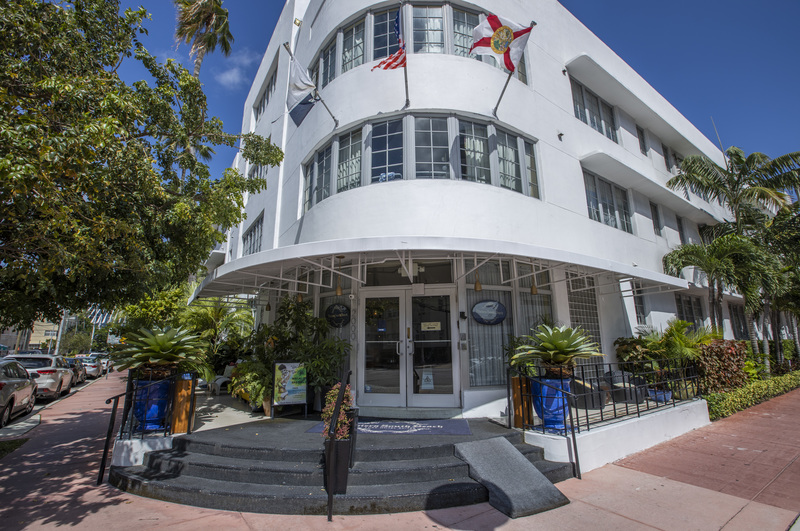
Architect: Henry Hohauser
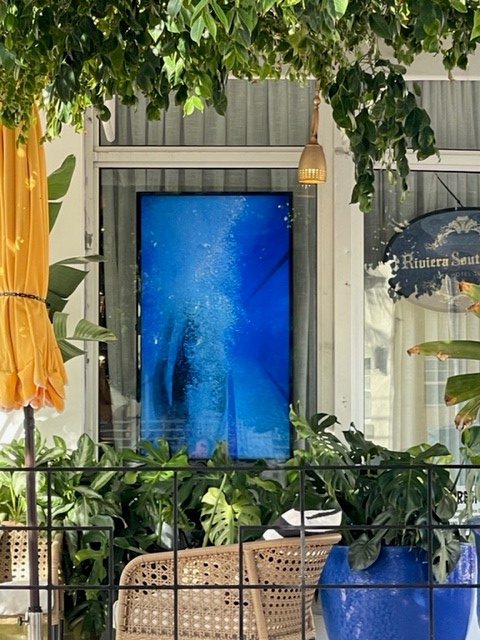
For Miami-based and Brazilian-born artist Maritza Caneca, swimming pools are magic mirrors into the people and places they surround.
Caneca created Submersion in Blue after returning to her grandparents’ farm in Brazil after decades and finding it empty. This led her on a long voyage, learning about the rituals and maintenance of pools everywhere from Budapest to Havana. Her dynamic photographs of pools are inspired by the works of Edward Hopper and David Hockney.
Carcass, Beatriz Chachamovits
📍Esme Miami Beach (1438 Washington Ave)
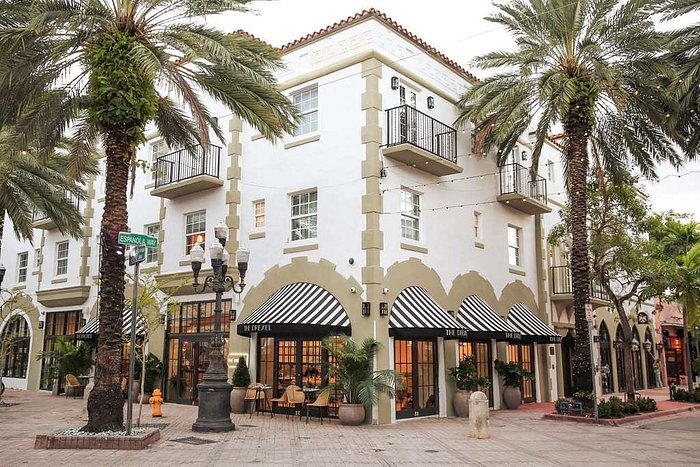
Architect: Henry Hohauser
What would Miami be without its vibrant Coral Reefs? Carcass, a ceramic installation by Sao Paolo artist and educator Beatriz Chachamovits asks viewers just this.
A statement on coral bleaching, coral harvesting, and ocean degradation, the art piece pays an ode to the many species native to the Florida Reef Tract currently endangered due to human stressors. You’ll spot the Elkhorn, Staghorn, Pillar, and Brain corals depicted surrounded by “everyday trash elements that end up in the ocean” like electronics and plastic bottles over sand.
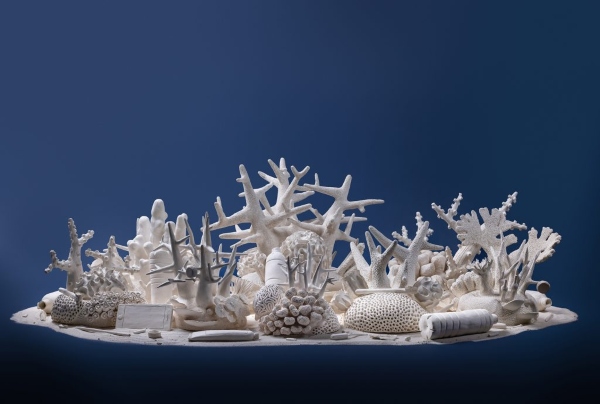
Liguus, Brookhart Jonquil
📍 Cadillac Hotel & Beach Club (3925 Collins Ave)

Architect: Roy France
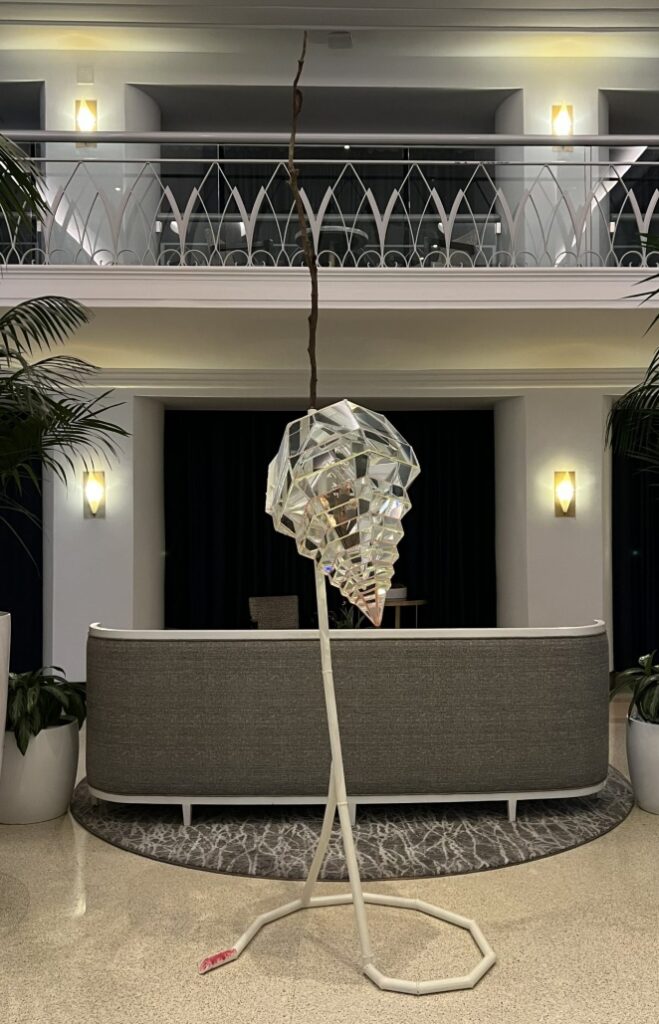
Liguus, named after the endangered tree snails native to the Everglades, is a sculpture that inspires environmental consciousness.
Known as ‘living jewels’ for their colorful shells, the tree snails are currently under threat by an invasive species of flatworm.
Beyond the sculpture’s shell, you’ll find an African monk orchid, the once-considered invasive species that became ‘naturalized’ in Florida, no longer a threat to its environment.
Angle of Vanishing Stability (AVS), Justin Long
📍International Inn On the Bay (2301 Normandy Dr)

Architect: Melvin Grossman
This piece, which stars a sailboat named Captain Winky, is named after the naval definition for ‘the point of no return’ for a ship, at which it finally capsizes.
It is stationed outside the International Inn, with the boat upturned and suspended 10 feet in the air solely by its mast.
This piece challenges viewers’ perception of balance, equilibrium, and time, asking: “How far can one be pushed until passing the point of no return?”
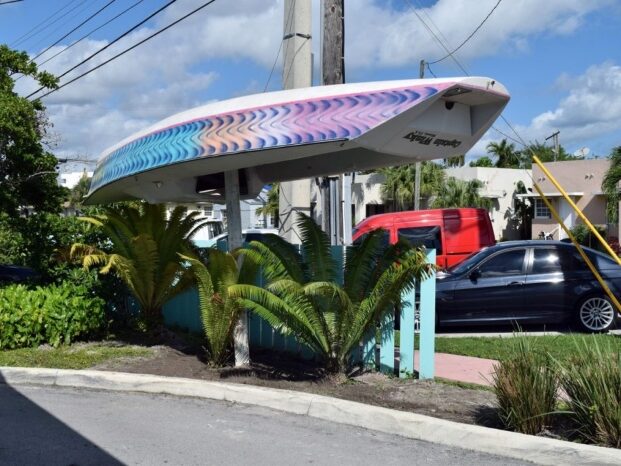
Sea Show, Claudio Marcotulli
📍Hotel Croydon (3720 Collins Ave)
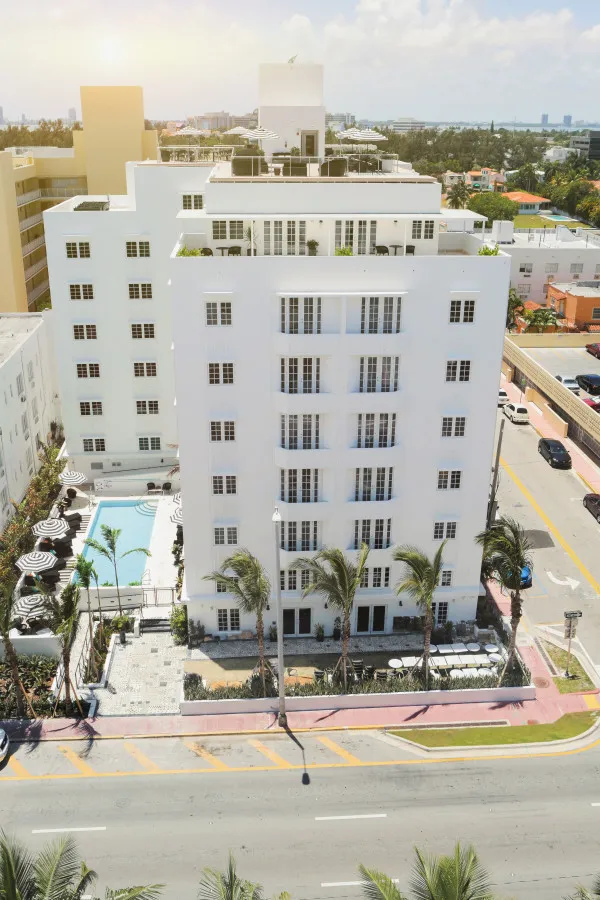
Architect: Dean Parmalee
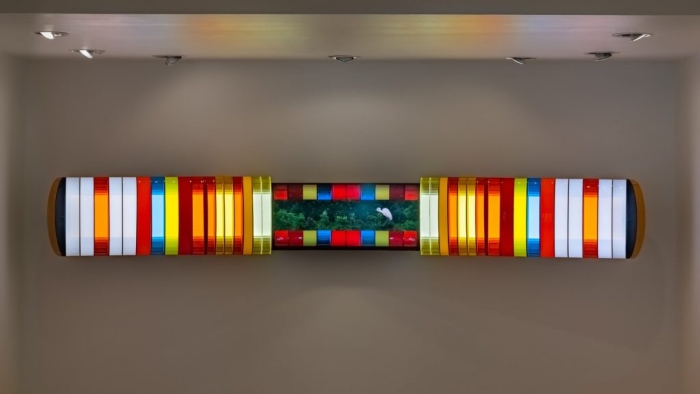
Sea Show acts as both a sculpture and an optical illusion of sorts.
Comprised of two panels of colorful lights with a TV monitor at its heart, the fixture acts almost like a resonant speaker that begins a light fixture and soon drowns the viewer with its morphing and fusing visuals.
Inspired by the Air & Sea Show, the dynamic fixture makes the most of lights and speed to convey a powerful message on overconsumption in the digital age, making viewers question their relation to it as an everyday source of stimulation beyond the natural world.
In Your Eyes, I Come Alive, Jessy Nite
📍Avalon Hotel Miami (700 Ocean Dr)
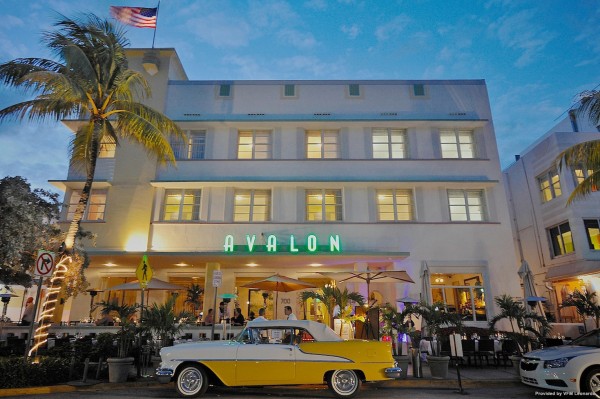
Architect: Albert Anis
For this installation, Jessy Nite uses sunlight, pastel colors, and shadows to adorn the Avalon Hotel.
Here, the sun acts as the protagonist, with its real-life and real-time position determining the shadow projection over the building, revealing a new side to the iconic Avalon Hotel.
Known for her interactive, colorful, and experiential, site-specific installations, Nite’s work has been commissioned and exhibited across Miami-Dade County and internationally.
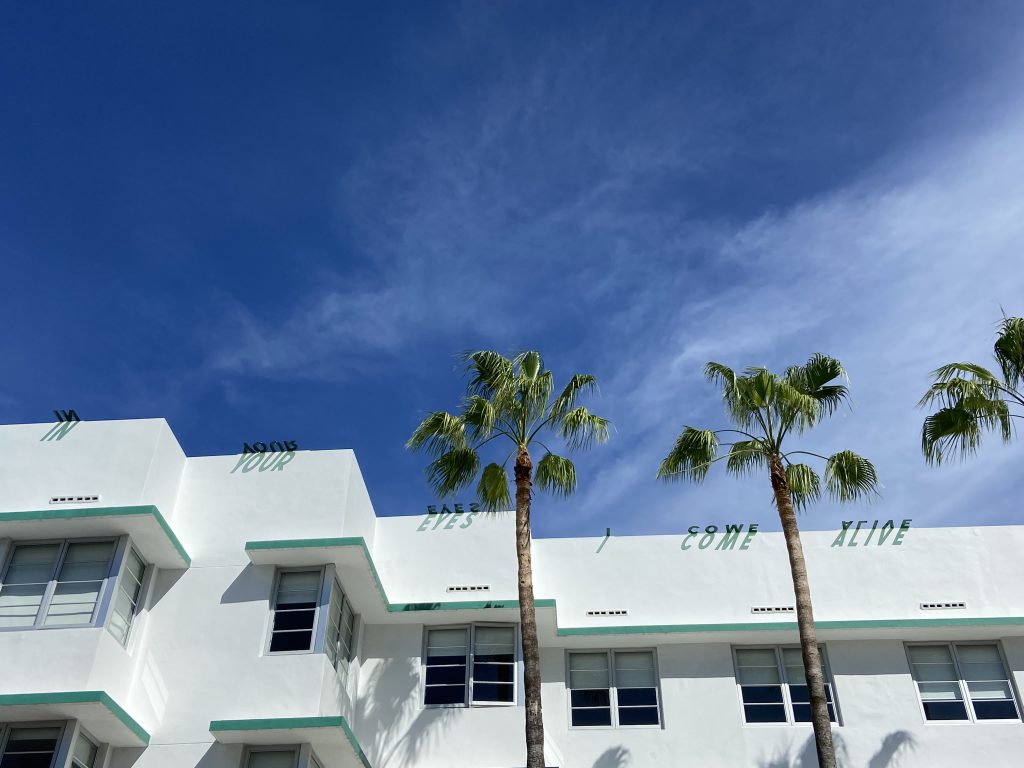
Maxi-Building on the Baroque, Charo Oquet
📍Catalina Hotel & Beach Club (1732 Collins Ave)
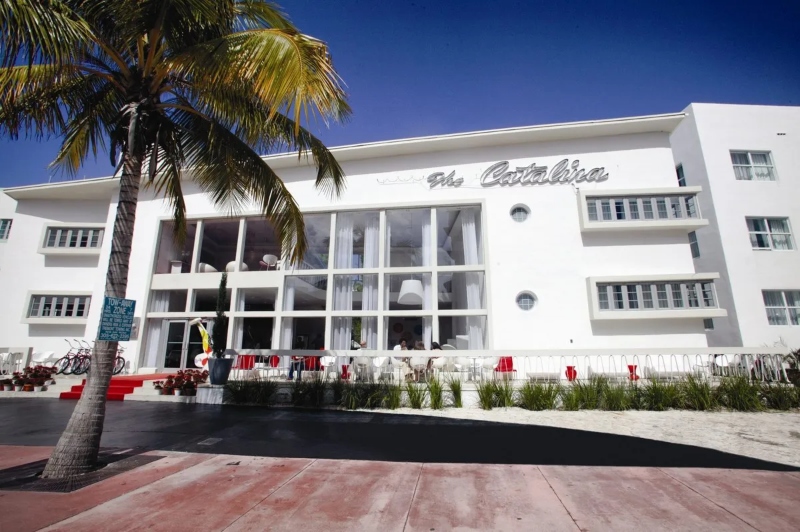
Architect: Milton Sherman
A maximalist at heart, Charo Oquet believes that in art and fashion, more is always better. Here, she ties the exuberance and audaciousness of the movement back to the days of baroque art, in its drama and emotional expression.
Using simple, everyday materials to bring these sculptures to life, they are also a monument to her Afro-Dominican heritage. Maxi-Building on the Baroque makes a bold statement on Eurocentric fashion standards and asks viewers what makes something ornate, beyond its materials.

Cosmic Occupancy, Sri Prabha
📍The Betsy Hotel, (1440 Ocean Dr)
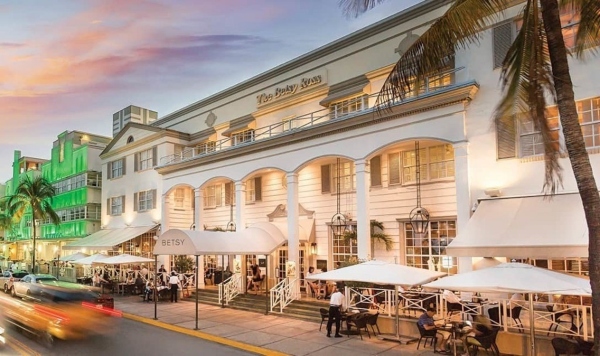
Architect: L. Murray Dixon
Sri Prabha is a multidisciplinary artist who integrates elements of geography, nature, time, human origins, and mysticism into his artistic process.
Themed around regeneration, growth, and sustainability, Cosmic Occupancy makes the most of The Betsy’s orb. It features 3 vivid projections showcasing the Earth’s ancient forests, lava caves, fossils, flora, and fauna.
The visuals are fused with text, mandalas, and light fields that together are meant to raise consciousness about our individual place in the universe.
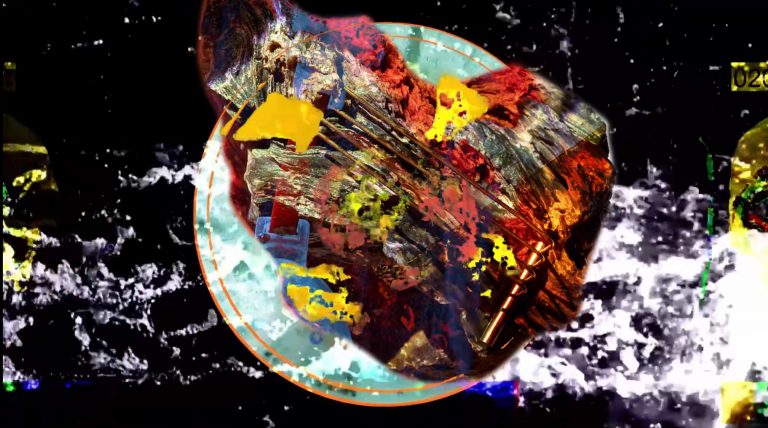
HYPER!, Esben Weile Kjær / Bas Fisher Invitational (BFI)
📍Fontainebleau Miami Beach (4441 Collins Ave)
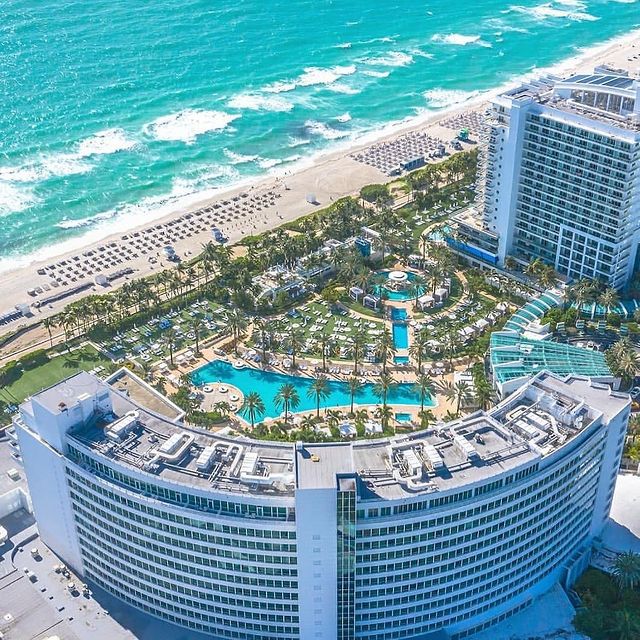
Architect: Morris Lapidus
Presented in the outdoors area of the Fontainebleau Hotel, HYPER!, a sculpture and performance piece by Danish artist Esben Weile Kjær is also presented in collaboration with Bas Fisher Invitational (BFI, Miami), and Danish curator Anna Frost.
It depicts silver inflatable carnivorous plants that will be activated twice during Miami Art Week, accompanied by a dance performance where the artist, along with four performers, will be swallowed by the plant.
The piece tells the story of how nature can either nurture us or destroy us.
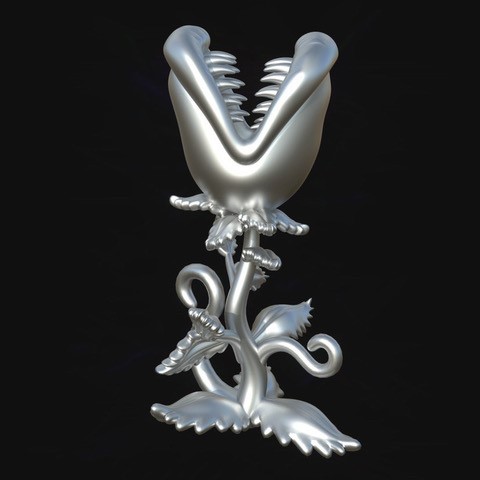
Reflections of Florida Wild, Magnus Sodamin
📍Loews Miami Beach Hotel (1601 Collins Ave)
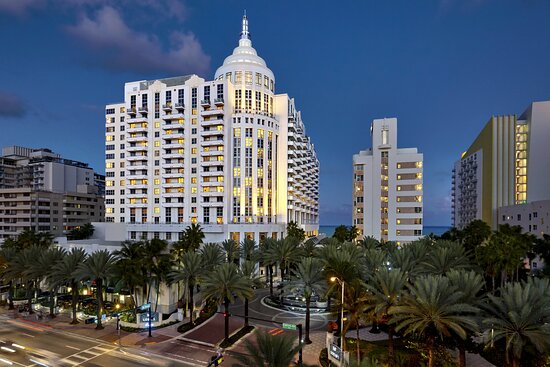
Architect: Nichols Brosch Sandoval
This 12’x18’ outdoor vinyl mural is inspired by the lush wilderness of the Everglades. It acts as a window to the past and to our present.
Welcoming visitors to the beach, Reflections of Florida Wild memorializes the beauty that makes Florida unique and signifies how regardless of fixtures, we’ve always been one with the environment.
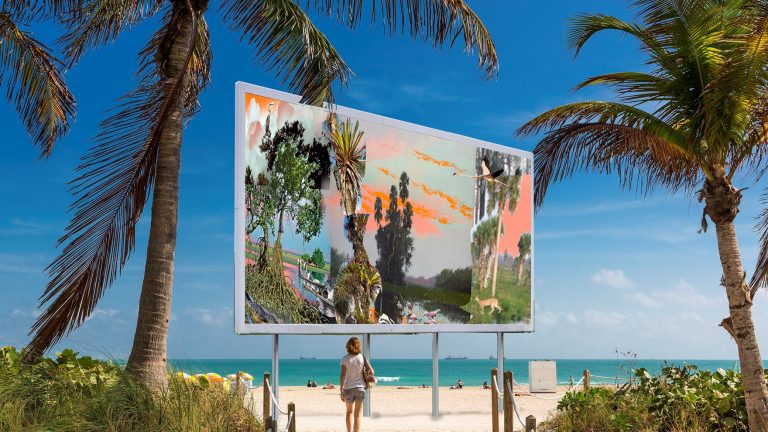
Treading Water, Michelle Weinberg
📍Royal Palm South Beach Miami (1545 Collins Ave)
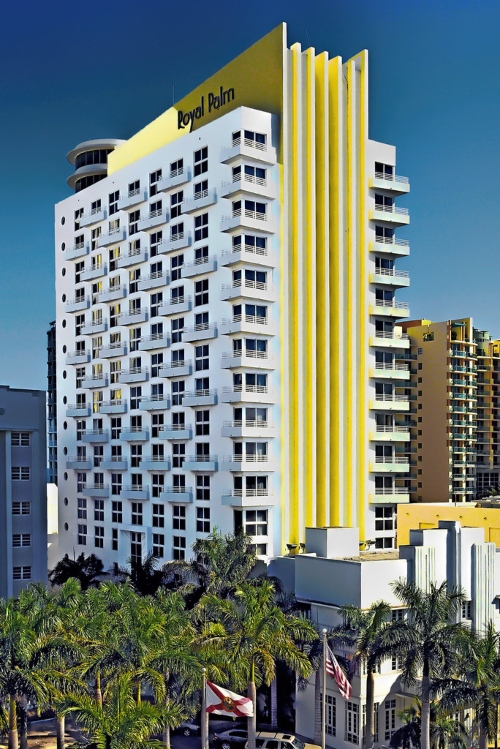
Architect: Donald G. Smith
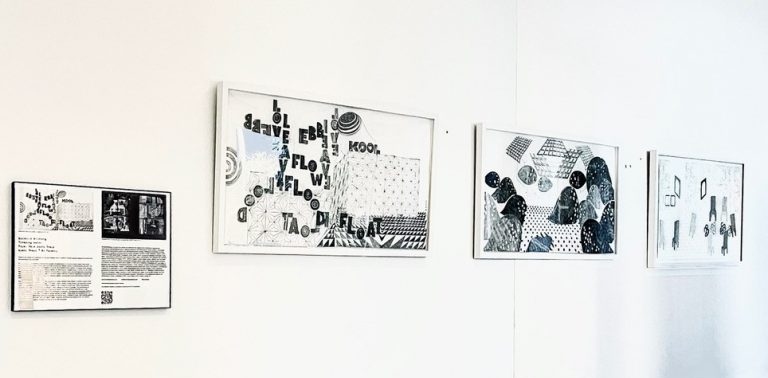
This series of drawings by Michelle Weinberg is inspired by all the feelings that come with living at the water’s edge.
The anxiety of high tides, waves, and sea walls, plus the added stress of political crises and the pandemic also played a significant role in her artistic process.
The drawings were made using both carbon and mulberry paper for a natural transference effect that mimics printing.
These works will be on view from Nov 17 to Dec 8 at their corresponding locations.
Artists were drawn from a call for submissions issued by the city and selected by representatives from the City of Miami Beach Art in Public Places Committee, Cultural Arts Council (CAC), and MBVCA.
The winner of the Juried Prize and the winner of the Public Prize will be announced on December 8, 2022. The public is encouraged to cast their vote beginning on November 17.
